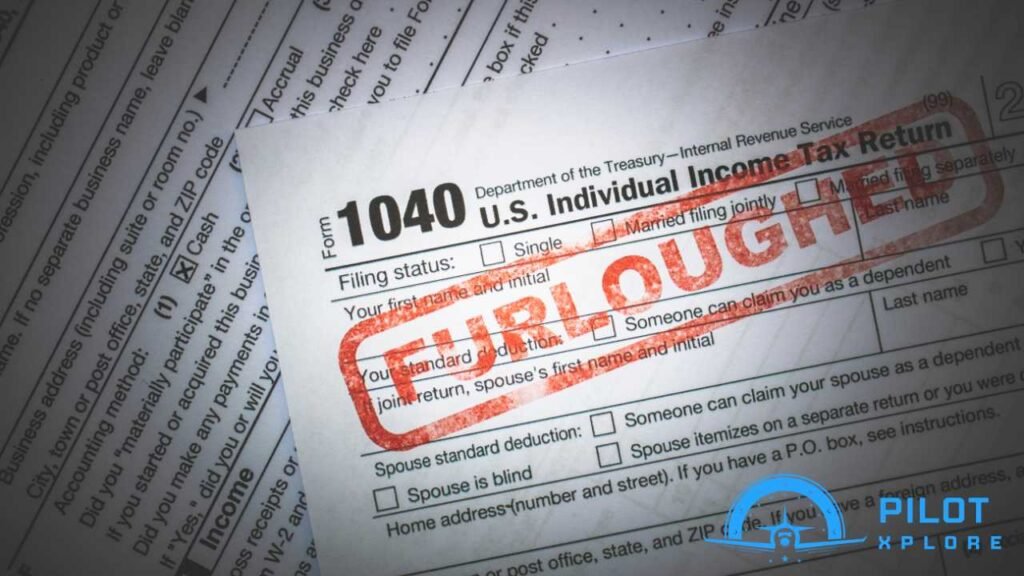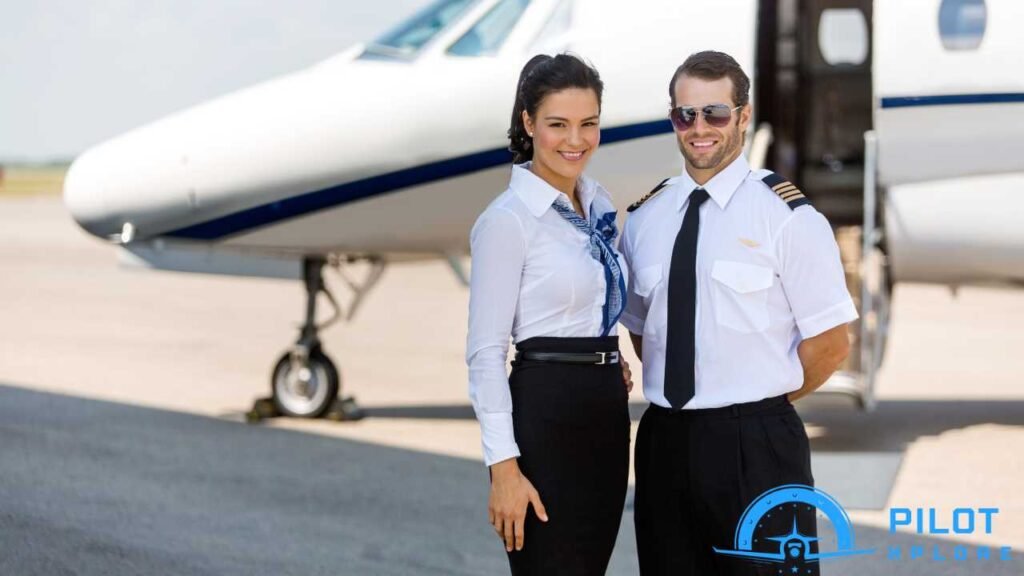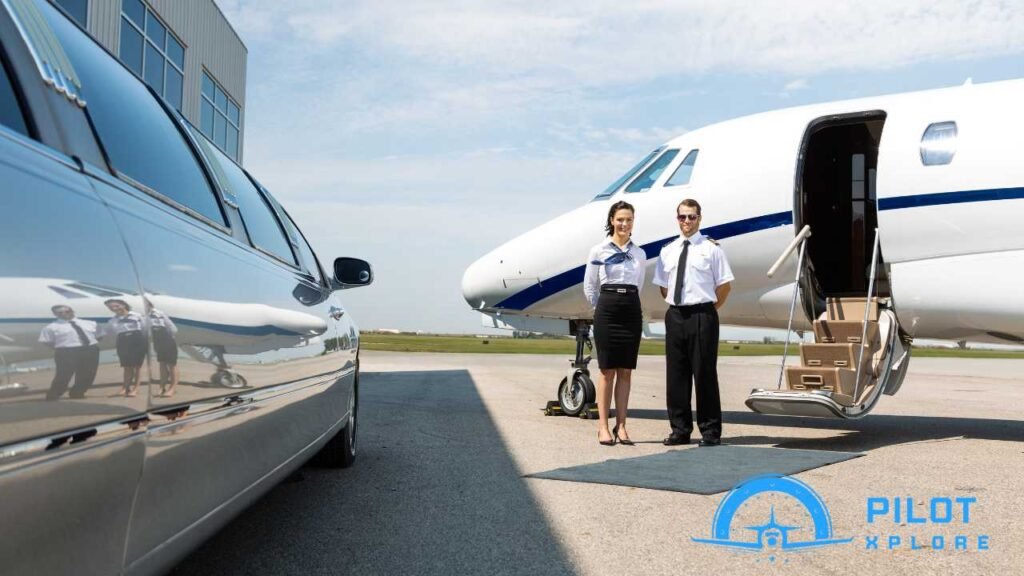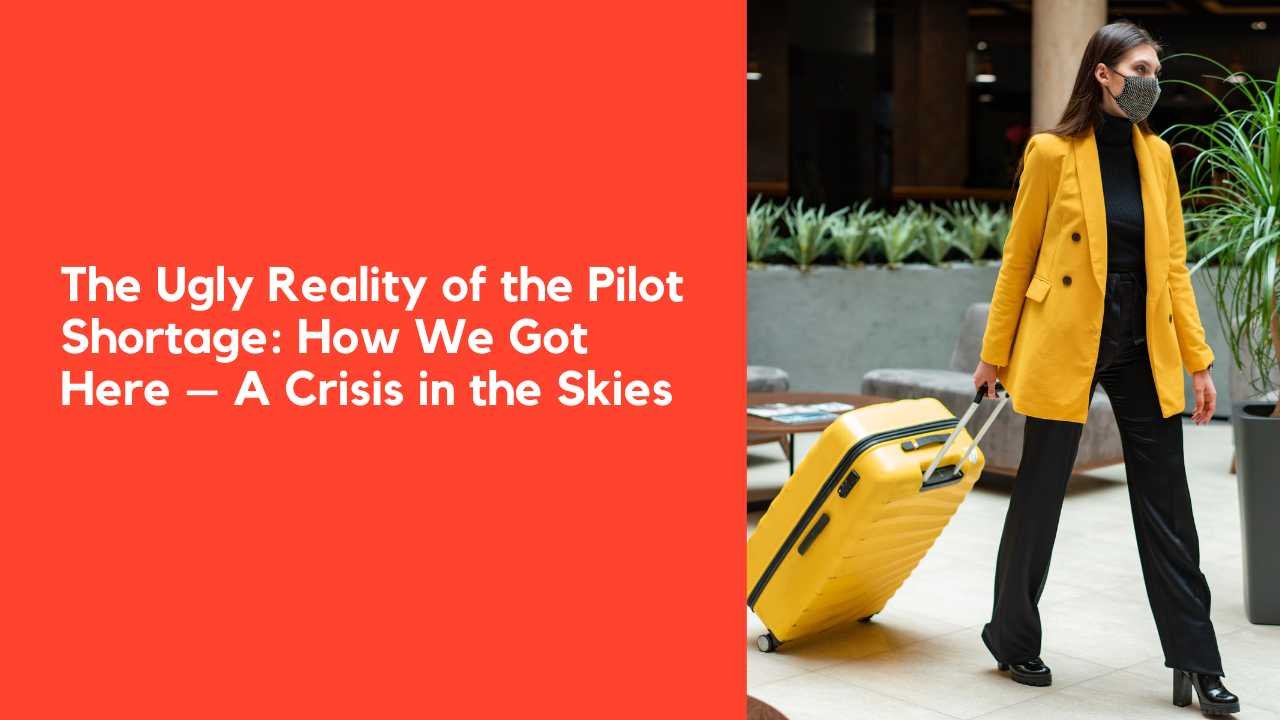Well, folks, we’re well underway toward a severe pilot shortage that’s starting to make an impact. As we head into the busiest travel season since 2019, passengers are already noticing the lack of reliability in their flights. Delays and cancellations are becoming the new normal, and this isn’t helping anyone’s travel plans. The pilot shortage is real and is here, showing up right on time at your nearest airport.
Many travelers are starting to feel the effects as the shortage hits, making their flying experience a lot more frustrating. Passengers are not happy, with many pointing to the increasing decline in passenger satisfaction, especially with flight crews and aircraft quality. A recent report, the North America Airline Satisfaction Study, clearly highlights that cost is becoming an issue too, with dissatisfaction growing.
What went wrong here? The good news is, there are ways to fix it, but it requires urgent action. As this situation continues to unfold, it’s clear that we are expecting a bumpy ride, so be sure to fasten your seatbelts.
The Pandemic’s Aftermath: From Financial Struggles to a Pilot Deficit
During the pandemic, the travel industry was hit hard, with airline stocks like Delta (SEC:DAL) crashing to unprecedented levels. Airlines were losing 10-15 million per day at the height of the crisis, and many of them were just trying to stay afloat. Some even faced the harsh reality that they were losing more money than they had ever made in a year, with most airlines usually happy to make 10-15 million in profit per year until 2015.
Amidst the chaos, tumultuous debates in Congress about payroll support funding created even more uncertainty, making it harder for airlines to secure support. As the bills passed and the situation worsened, airlines were forced to fling into panic, reducing labor costs by cutting back on the most essential resource – pilots. Labor costs such as training, accommodation, and logistics typically make up 20% of airline expenses, and in an effort to survive, airlines decided to reduce labor, thinking it would save them.
Unfortunately, this decision has led to the pilot shortage we are facing today.
It’s easy to cut jobs, but harder to get them back when you need them. — Aviation Analyst

Furlough Dilemmas: Tough Choices for Airlines During the Crisis
When the pandemic hit, airlines had to make tough decisions. Furlough letters were sent to pilots, warning them they might lose jobs. Smaller international airlines like Spirit were able to reach agreements with their unions to avoid furloughs, while larger ones like American, Delta, and United faced much more exposure.
Some fared better than others—United built a sympathetic relationship with their pilot group and came to an early agreement to avoid furloughs. On the other hand, Delta took a much more aggressive anti-union stance, telling its pilots to secure another job to pay their bills for the next 12 to 24 months.
They reneged on some furlough-preventing provisions already agreed upon with the pilot union, leading to a tense back-and-forth between the union and the company. The stress of the situation continued for uncertain months before pilots agreed to pay-cuts to keep their jobs. American Airlines went a step further by actually furloughing some pilots and flight attendants, a scenario far worse than what Delta or United faced.

Early Retirements: A Temporary Fix Amidst the Pilot Shortage
The Flying Fahans, a popular pilot couple on Instagram, chose to take early retirement in an effort to help junior pilots avoid being furloughed. Their decision inspired a broader trend among airlines, many of which introduced early retirement programs to cut labor costs during tough times.
Some carriers, like Delta, saw considerable participation—securing 1,800 early retirements—while others, such as United, saw fewer, with only 502. Despite these efforts, Delta still had to furlough 2,000 junior pilots, a reduction from the originally planned 2,500. This move sparked significant discontent among staff, who were already coping with a 15% reduction in workforce.
Two years later, Delta continues to train pilots to regain operational readiness. During the pandemic, major airlines like American, Delta, and United had all planned to scale down, but early retirements ultimately proved to be a more effective way to maintain smoother operations.
| Airline | Early Retirements Secured | Junior Pilot Furloughs |
| Delta | 1,800 | 2,000 |
| United | 502 | 2,500 |
| American Airlines | – | 3,000 |

Furloughs and Their Expensive Impact on Airlines and Pilots
When Delta and United were facing the possibility of furloughs, the costs were massive. Despite the early retirements, Delta still had to designate 2,000 junior pilots as unassigned to aircraft, preparing for potential furloughs. These pilots usually fly small domestic airplanes, but during the pandemic, senior pilots flying larger international airplanes were staying at home and watching flights cancelled.
To cope with this, the company had to reassign senior pilots to fill those domestic airplane slots, which came with hundreds of millions in additional training costs. As the recovery began in 2021, many fliers were excited about traveling again, but American and Delta were slow to hire new pilots and were still processing training for senior pilots to get them flying smaller airplanes.
On top of that, the junior pilots had to go through retraining to regain currency, but with a shortage of training instructors (many of whom had been furloughed or taken early retirement), it created a huge problem. The cascading effect led to a massive training backlog, and it became impossible to recover quickly as the training throughput was already consumed entirely.
You can never fully plan for the financial strain furloughs can bring. They go beyond just numbers—they affect morale.” — Senior Pilot
How United’s Pilot Relations Have Helped Avoid the Worst of the Shortage
When it comes to managing pilots and avoiding furloughs, United Airlines stands out for its strong management-personnel relations. While other airlines like Delta and American faced severe delays in hiring and experienced unheard of delays and cancellations, United’s proactive approach helped them avoid the same chaos.
They came to an agreement with their pilots early, allowing them to stave off furloughs and keep their pilots in position, ready to pounce when demand returned. As a result, they were able to start hiring by April 2021, while Delta didn’t begin until August, and American waited until the Fall. United’s early start has meant they’ve been ahead, avoiding the tumultuous shortage faced by other airlines.
Meanwhile, Delta and American have been playing catchup and are now facing mega training costs and delays, which have made their recovery slower and more difficult. It’s clear that United’s relationship with its pilots has played a crucial role in keeping them ready while others are still trying to recover.
“The relationship between pilots and management is the cornerstone of a successful airline.” — United Airlines Management
The Pilot Shortage: Why It Should Matter to Every Traveler
The ongoing pilot shortage is leading to flight delays and cancellations, resulting in reduced flight availability. The aviation industry is facing an unprecedented challenge, with route planners and crew schedulers working urgently to allocate pilots and manage staffing constraints.
To stay within these limits, airlines are cutting flight schedules—reducing routes and flight frequency—which directly affects passengers. While airlines may have the aircraft, ground staff, flight attendants, gate space, and maintenance crews ready, they simply can’t operate as usual without enough pilots.
As a result, any disruption—such as weather, air traffic control issues, or maintenance delays—has a magnified impact on an already strained system. The shortage of pilots has become a key reason why airlines are scaling back their schedules, even though it’s a last resort. This marks the first time in history that flight operations are being constrained in this way—something that should concern travelers, as it directly affects both flight availability and safety.
| Factor | Impact |
| Pilot Deficit | 10,000 pilots short annually |
| Average Pilot Salary | Can be 5x lower in regional jobs |
| New Pilots Trained (Annually) | 5,000-10,000 |
| Retiring Pilots (Annually) | 16,000 pilots |
| Estimated Need (2022-2040) | 200,000 pilots in North America |
The pilot shortage isn’t just a logistical issue; it’s a fundamental challenge to the availability and safety of air travel. – Unknown

Practical Steps to Safeguard Your Travel Plans Amidst the Pilot Shortage
To protect yourself from the effects of the pilot shortage, it’s important to plan ahead and stay flexible. One simple way is to book flexible tickets instead of basic economy fares. This way, if there are changes to your flight, you won’t have to pay a large price difference for last-minute adjustments.
In case of a cancellation, remember that basic economy passengers are last in line to be rebooked. You should also keep a buffer day between flights to avoid the worst case scenario. If you’re uncertain about an airline’s operational status, use tools like FlightAware and the Bureau of Transportation Statistics to check real-time data, including month-by-month statistics, on-time arrivals, and cancellation rates.
This will help you make informed decisions. Lastly, if you notice pilots picketing, know that it is an informational action and doesn’t directly affect the operation. Always be aware and prepared when flying in today’s uncertain aviation environment.

The Future Pilot Supply: Can We Bridge the Gap?
The FAA reports that about 5000-10000 new pilots are trained each year, but with 16,000 pilots retiring annually, there is clearly a deficit. According to Boeing’s Pilot & Technician Outlook, between 2022-2040, over 200,000 pilots will be needed in North America alone.
This creates a major challenge for legacy airlines, especially when we consider the high training costs — sometimes as much as 100K out of pocket — and the uncertainty of a return on investment. The obstacles are many, including impediments to training, but airlines must get creative to overcome them.
If you are learning to fly, the Ultimate Guide to Becoming a Pilot might help you understand the process, but it’s clear that representation and support for new pilots will play a crucial role in bridging this gap moving forward.
“The shortage of pilots is not just a challenge for airlines; it’s a call for bold action to secure the future of air travel.” – Boeing

Aviation Career Pathways: Guiding Aspiring Pilots Into Major Airlines
When I first looked into becoming a pilot, it felt like a maze—one with no clear direction. Fortunately, programs such as United’s Aviate, Delta’s Propel, and American’s cadet system provided much-needed clarity. I remember browsing aviate.com late at night, wondering if enrolling in a flight school would really be worth it. These airline-sponsored programs do a good job laying out a pathway for those who are serious about a career in aviation.
They guide aspiring pilots through training, interview prep, and even help meet requirements like working with an affiliated regional career before transitioning to a job at a major airline. The structure is solid—United has invested deeply in starting its own program, and while many of these tie directly into the university system, it’s becoming clearer that this system alone is not enough.
The idea of building a lucrative aviation career used to seem distant, but thanks to these legacy airlines creating intentional routes into the cockpit, the road—while still challenging—feels more defined. Even though you’ll spend a lot of time climbing the ladder, these pathways are a critical first step into an industry that desperately needs new pilots.
“Building a career in aviation used to feel like an impossible dream. Today, thanks to airlines like United, it’s becoming a reality.” – Aviation Insider

The Importance of Representation and Outreach for Diverse Aviation Talent
When I first thought about becoming a pilot, I had no idea how to start—or even if it was a career truly available to someone like me. That’s why partnering with organizations like the Organization of Black Aerospace Professionals and Women in Aviation, International is such an important step in fixing the airline industry’s diversity problem.
These groups focus on outreach and representation, showing young people—especially women and minority students—that aviation can be for them, too. Programs like the Aviation Career Education (ACE) camps, held every year by OBAP and promoted through obap.com, are a strong example. They help people become interested by showing that this path is not just for a select few.
I’ve seen firsthand how a small conversation or a single camp visit can completely change someone’s idea of what kind of career is possible.
It’s also why I think what United has done with its Aviate program is even better. They’ve opened their own flight school, setting an ambitious but tenable goal of training 50% women and minority pilot students. While the industry currently only has 5-6% minority pilots and women, this push helps attract excellent, diverse talent.
And there’s more to it—when airlines like Delta, American, and United open their own schools, they not only train new pilots but also maximize the potential to push a more welcoming, open future in aviation. From day one, it builds loyalty, mutual respect, and long-term fidelity between the employee and employer. With strong training and steady guiding, this is how we ensure a better, more inclusive pipeline of pilots for the future.
| Program | Focus Area | Percentage Targeted |
| United’s Aviate | Pathway for pilots from various backgrounds | 50% women and minority pilots |
| Women in Aviation International | Scholarships, mentorship, and career outreach | Women pilots |
| OBAP’s ACE Camps | Encouraging minority and underrepresented groups | Minority youth in aviation |

Pilot Pay and Quality of Life: Crucial Factors for Recruitment and Retention
The airline industry is grappling with a severe pilot shortage, with an estimated annual gap nearing 10,000 positions. In the short term, the most practical solution is to attract seasoned pilots from other carriers. However, this is challenging amid ongoing concerns about pay, work-life balance, and overall job conditions. Many civilian pilots begin their careers with regional or feeder airlines, flying smaller 76-seat jets. These entry-level roles often come with salaries up to five times lower than those at major carriers, discouraging many from entering or remaining in the profession.
Fox9’s coverage of Delta pilots protesting at MSP Airport underscores the strain within the industry, as pilots push back against grueling schedules and excessive workloads. Chronic fatigue, stress, and the demands of decades-long careers have made flying less appealing—especially as major airlines delay updates to long-expired contracts.
The stalled negotiations, missed collective bargaining agreements, and reluctance to engage in meaningful dialogue reflect deeper systemic problems. In contrast, United Airlines has set a positive example by reaching an Agreement in Principle with its pilots’ union, signaling a path toward a more stable and appealing future for the profession—if others are willing to follow their lead.
The Financial Barriers to Becoming a Pilot: How Airlines Can Help
When I was 16 and took my first discovery flight, I knew I wanted to fly—but I also quickly realized how expensive flight training really is. While there are scholarships and funding opportunities, they rarely move the needle enough to make this path truly accessible. Many aspiring pilots don’t know they can use student loans, or that a return on their investment—similar to university or medical school—is even possible.
But without clear access to financing, the dream stays out of reach. This is where airlines need to step up by providing financing or helping guarantee a steady stream of future talent. Pay expectations can motivate people to take on risk, especially if airlines commit to paying for the later portions of training through tightly-bound contracts.
If even one airline made this move, it could unlock potential, free the path for many, and give them a real chance at flying—and that’s the kind of bold hope we need.

The Increasing Effects of the Pilot Shortage on Passengers
The pilot shortage is causing significant disruptions for passengers, with delays and cancellations becoming more frequent as airlines struggle to maintain flight schedules. As airlines reduce the number of flights to cope with the shortage, travelers are facing longer wait times and fewer options for rebooking when things go wrong.
This not only impacts passenger satisfaction but also results in a ripple effect across the aviation industry, affecting everything from gate staffing to maintenance and ground operations. As flight availability declines, it’s clear that the pilot shortage is directly influencing the overall air travel experience.
Expanding Pilot Training Programs: A Key Solution to the Crisis
One major solution to the pilot shortage lies in expanding and enhancing pilot training programs. Many airlines, recognizing the growing gap, are investing in dedicated flight schools and partnerships with universities to create a more structured path for aspiring pilots.United Airlines Aviate program and Delta’s Propel initiative serve as leading examples of how airlines are working to recruit and train the next generation of pilots.
These programs provide a clear route into the cockpit, with mentorship, flight training, and a defined career path. However, to truly close the gap, these programs need to be scaled up, and greater access to funding and scholarships will be necessary to make them available to a broader pool of candidates.
The Role of Pilot Pay and Working Conditions in Recruitment
As the pilot shortage deepens, attracting new talent to the industry is becoming increasingly difficult, especially given the challenging pay and working conditions. Many regional airlines pay entry-level pilots significantly less, and the demanding schedules and extended hours take a toll on their quality of life.
This has led to burnout and a reluctance to continue in the profession. To resolve this, the aviation industry needs to address pilot pay, working conditions, and fatigue management. Ensuring pilots are compensated fairly for their hard work and are given manageable schedules will be crucial in attracting and retaining the pilots needed to meet demand.
Why Diversity Is Crucial for Solving the Pilot Shortage
Promoting diversity in aviation is a crucial long-term strategy for addressing the pilot shortage. Organizations such as the Organization of Black Aerospace Professionals and Women in Aviation International are actively encouraging women and other underrepresented groups to pursue careers in the field.
Airlines like United are taking concrete steps to recruit more diverse candidates, with programs designed to train a pilot workforce that is 50% women and minorities. Expanding diversity not only increases the industry’s talent pool but also helps create a more inclusive and forward-thinking workforce—one that better represents the communities it serves.
Frequently Asked Questions
What caused the pilot shortage?
The pilot shortage stems from pandemic-related furloughs, early retirements, and slow recruitment, creating a significant gap between retiring pilots and new talent entering the workforce.
How is the pilot shortage affecting passengers?
Passengers are experiencing more delays and cancellations due to a reduced flight schedule and limited pilot availability, leading to longer wait times and fewer options for rebooking.
What are airlines doing to recruit new pilots?
Airlines like United and Delta are offering programs like Aviate and Propel, which provide training and career pathways for aspiring pilots to meet the growing demand for talent.
How many pilots are retiring each year?
Approximately 16,000 pilots retire annually, which exacerbates the pilot shortage, as the number of new pilots being trained each year is far lower than needed.
What role do early retirements play in the shortage?
Early retirements during the pandemic helped reduce labor costs but also created a shortfall of experienced pilots, leaving airlines struggling to fill positions once air travel resumed.
How does pilot pay impact recruitment?
Lower pay, especially in regional roles, discourages new pilots from entering the profession, as they often face challenging work conditions for lower wages compared to larger airlines.
Why is diversity important in addressing the pilot shortage?
Diversity programs like United’s Aviate and organizations like Women in Aviation International encourage underrepresented groups to pursue aviation careers, helping expand the talent pool and foster innovation.
How is United Airlines handling the pilot shortage?
United Airlines proactively negotiated with pilots early, avoiding furloughs and beginning hiring sooner than other airlines, which helped them better manage staffing shortages and flight disruptions.
Can airlines overcome the pilot shortage?
Airlines need to invest more in pilot training, improve pay, and enhance working conditions to attract and retain talent. Expanding programs and financial support for training will be crucial.
How does the pilot shortage affect flight safety?
Flight safety may be indirectly impacted by the shortage, as fewer pilots and the need for more training can strain resources, potentially affecting operational preparedness and response times in emergencies.
Conclusion
In conclusion, the pilot shortage is an urgent issue that continues to affect the airline industry, with far-reaching consequences for both passengers and the aviation workforce. Years of underinvestment, furloughs, early retirements, and slow recruitment have left airlines scrambling to fill staffing gaps, resulting in flight delays, cancellations, and declining customer satisfaction.
While programs aimed at training new pilots and addressing compensation concerns are steps in the right direction, the industry must take more decisive action to create sustainable solutions. Increased investment in training, improved pay and working conditions, and a focus on diversity will be key to addressing the shortage and ensuring the future stability of air travel. As the aviation sector faces this critical challenge, it’s clear that collaboration, innovation, and long-term planning will be essential for keeping the skies open and reliable for years to come.

Stephanie Kiley, founder of PilotXplore, is a commercial pilot and Doctor of Education based in Connecticut. I shares expert aviation insights, travel tips, and airline reviews, making air travel easier for all. Passionate about flying and learning, she loves exploring new destinations and simplifying aviation for travelers.

